MO Tested: Alpinestars Tech-Air Off-Road Review

Astars brings off-road airbag protection to the masses
Alpinestars has been working on airbag technology for more than 20 years now, but its Tech-Air Off-Road project only began development seven years ago. Throughout that time, the technology has advanced and these systems have been refined through more than a million miles of data logging. Airbags have been mandatory in Rally racing for years now, but in just the 2024 Dakar rally alone, 107 racers used the system with Alpinestars recording 323 deployments over the 14-day race – and all of that data is constantly being used to refine the algorithm. Now, brought to the masses in its fourth iteration, the Alpinestars Tech-Air Off-road system is the most recent fruit to flourish from a seed planted more than two decades earlier.
Alpinestars Tech-Air Off-Road
Alpinestars has finally released its Tech-Air Off-Road system, a comprehensive upper body protection system that brings with it a number of firsts from the company that make it both easy to use and more versatile.
Aesthetics | 9/10 | Protection | 9.5/10 | Comfort | 10/10 |
Value | 8/10 | Weight | 8.5/10 | Innovation | 10/10 |
Quality | 9/10 | Options | 9/10 | Weather | 6/10 |
Desirability | 10/10 | Editor Score: 89% | |||
Highs
- Very comfortable, breathes well, even in the heat of Southeast Asia
- Although the entire thing weighs seven pounds, the weight is distributed nicely
- Shoulders and elbows are removable for use with jackets that may have pads included
Sighs
- You can turn the system off with the control module, but not on
- System will turn off after being stopped for too long of a period of time, so it’s always best to check after a snack break
- Side/rib protection would be nice
If you haven’t been paying attention, Alpinestars has risen to the forefront of motorcycling airbag technology. Sure, there are other companies occupying the space, but no other manufacturer has developed, refined, and innovated in the same way the Treviso-based brand has. I’m not here to choose sides as to which company’s philosophies on manufacturing and safety are the best, but with four systems available in the market now that cover riders from commuting, to trackdays and racing, and now off-road, it’s clear the company is making an investment in rider safety of all kinds.
For our first experience with the Tech-Air Off-Road system, the US-based Alpinestars crew out of Torrance, CA set up a two-day riding experience in Death Valley for the global press launch. With experts from the US and Italy, two of the biggest names in Rally, and a slew of support from OEMs including KTM and Honda, we were set to have our first go at this new technology.
And then an atmospheric river tore through Southern California causing catastrophic flooding and landslides throughout the Los Angeles area. Not immune, the far reaching storm turned what is commonly referred to as the hottest, driest place on Earth into a popular kayaking destination as Badwater Basin (282 ft below sea level) filled with water, creating a lake spanning more than seven miles in length. We foolish few were undeterred and it was heard often echoing amongst the group during our four days in the Mojave Desert, “It’s definitely going to be an adventure!” And it was.
Construction
The basic construction should be familiar to anyone who’s used an armor jacket previously from any brand. The chassis of the jacket is made up of a breathable “stretch mesh” material and features “passive” CE-Level 1 protection in the shoulders, elbows and back, with the chest protector receiving a CE Level 2 rating. Stretchy bands tie the armor together and keep things in place with the side bands offering the only adjustment to fit. Disconnecting the left side’s shoulder and side strap allow access to the jacket’s offset side zipper which is how you’ll be slipping into the system. Once zipped up, two magnets align, lights start flashing, and you’re on your way to being fully airbag protected.
The shoulder and elbow pads can be easily removed from the outside should you plan to use the system with a jacket that has its own armor. If you do find yourself using it with just a jersey pulled over the top, Astars used abrasion resistant fabric over these two areas to help keep things together in the event of a get off. On the back, a hydration pocket can be used for holding large or small water bladders.
Moving on from the obvious, popping the cover on the back protector reveals where the magic happens. Two canisters and the brains of the system – which are informed by a tri-axial accelerometer and gyrometer – are housed back there along with a master on/off switch to disable the system for travel or storage. Two canisters mean you get two deployments with the Tech-Air Off-Road system and these canisters can be replaced by the user, it’ll just run you $170 per two-pack. After four deployments, Alpinestars suggests you send it in for a replacement airbag which is probably going to run you $300 for a repack and canisters. While Alpinestars suggests you send the entire thing in for inspection after four deployments, they haven’t stopped the system from being used after this, rather, the indicator light on the front control module will stay yellow as a warning to let you know the system needs servicing. After the 40 to 60 milliseconds the system takes to deploy (depending on jacket size), you’ve got airbag coverage over the full back, chest, shoulders, as well as neck thanks to the airbag limiting helmet movement. For context, a blink of the eye is about 100 milliseconds.
Speaking of the control module, this leads to another cool feature about the system. For the first time in Alpinestars Tech-Air line, the rider has the choice of switching between three modes, which should cover the vast majority of ADV and off-road riders. Starting with Street, this is the same algorithm used in Astar’s street-focused products such as the Tech-Air 3 and 5. Moving on, Enduro mode is meant to be used for just that, lower speed technical off-road riding. Lastly, Rally mode is the same algorithm being used by top pros the likes of Skyler Howes and two-time Dakar champ Ricky Brabec – who affectionately refers to his Tech-Air Off-road system as the “life jacket.”
The lithium-ion battery’s life is rated at 30 hours, with Alpinestars claiming a full charge can be had in four hours. They also mentioned one hour of charging should yield eight hours of run time. When switched on, the system goes through a check, alerts the user to the battery life indicated by the LED on the control module, and then goes blue when you’re ready to rock. [Fun fact: Alpinestars chose blue for their “ready to run” color after a color-blind Tech-Air engineer pointed out that differentiating green and red are two of the most common vision deficiencies.] You can also see the battery life on the app when connected.
Out of the frying pan and into the… bath?
For our first day’s ride we set out on adventure bikes to see what kind of trouble we could get ourselves in, fully knowing that we may end up using our TAs as floatation devices due to the omnipresent risk of flash flooding in Death Valley. I ended up leaving the system in Street mode for the entire day, despite the fact 70% or so of the ride was off-road. We didn’t encounter anything terribly challenging, but there was plenty of high speed stuff, small bumps, jumps, and slides. No one had any issues and I’m happy to report that the system fell to the back of my mind for the day.
The TA Off-Road is one of the most comfortable armor jackets I’ve worn. Despite being approximately seven pounds, it distributes the weight evenly and it wasn’t something that crossed my mind over our two days of riding. Other touches like external seams, padding on the inside of the armored areas, and open armpits all add to the system’s comfort.
After a recent unrelated get-off left me with some forearm damage, despite wearing a motorcycle jacket with armor, I do find myself wishing the forearm area was tighter on the TA. Under a jacket, I think the size and contour of the armor would keep it in place, but with just a jersey, I have some concern that a high-speed crash could cause the armor to rotate on my arms. Being between medium/large these days, sizing down may alleviate this concern in my case, but there are also plenty of armor jackets out there that feature forearm adjustability (including within Alpinestars lineup). There’s a fine line between keeping things in place and not causing arm pump.
Day two got a little more interesting on the dual-sport bikes as we made up some of our route the morning of and even managed to make it out to some BLM land for some cross country blasts. The best part of this event was not knowing what was going to happen and facing the challenges the weather had presented as a team. It’s my favorite thing about riding off-road with friends. There isn’t much that cultivates camaraderie like venturing into the unknown together. Having the peace of mind of the airbag doesn’t hurt in those unknown situations either.
With the system set in Enduro mode, we tackled mud, water, and dunes that were so thoroughly moistened, that it was like standing on concrete. Despite reaching speeds on our cross country blasts that could have warranted Rally mode, I didn’t have any issues with the system. A couple of others did manage to set their airbags off while we were out playing in the dunes. In one case, it was warranted as a rider hucked himself off of a dune, but the other left some questions. Vanessa Ruck had a low speed lowside at the top of a dune and her airbag deployed. After getting the bike off of her leg, we discussed that she felt it probably didn’t need to go off. Upon closer inspection though, Ruck had left her TA system in Street mode, so one could argue that the system worked just as it should if one were to be “street” riding.
The only other detail that should be noted is that the system will go into a “sleep” mode if it isn’t moved for 15 minutes or so. While Astars mentioned that it shouldn’t happen if you’re sitting around having lunch – because you’re likely still moving to some degree – one of the riders on day two had his system shut off just as we were about to leave, which prompted him to remove his gloves, jacket, and pull up his jersey to unzip, then zip the system back up to re-arm it. Kind of a PITA. Being able to use the control module on the front to turn the system back on would have made this somewhat less annoying.
Alpinestars claims its airbag technology reduces impact forces by 95% percent. It’s no wonder riders like Howes – who has unfortunately put the system to the test in some big ways – consider the airbag to be a part of their kit that’s just as essential as a helmet or boots. That said, you don’t need to be fighting for championships to see the reality of the level of protection this tech provides. Already an advocate, our own Troy got hit during a shoot, and his Tech-Air 5 kept him from significant injury. Since then, Troy doesn’t get on a motorcycle whether it’s on the street or track, without one.
I’m looking forward to spending more time with the Tech-Air Off-Road system in more varied off-road situations. Who knows, maybe with this extra bit of protection it will give me the peace of mind to finally start doing some desert and enduro racing… Never say never..
UPDATE:
After using the TA Off-Road during the CFMoto Ibex 450 press introduction in the Philippines, I can verify that it does indeed breath well, even in mid-90 degrees with stifling humidity. I'd say it's on par with any other off-road armor jacket.
The issue of the system turning off during lunch stops or longer breaks was also verified as it happened twice during my second outing. With only a jersey over it, it's inconvenient. With a jacket or other layers, it would be annoying. It would be really great if Alpinestars could make an update to the Tech-Air Off-Road to be able to turn the system on/wake it up with the control module on the front.
Alpinestars Tech-Air Off-Road
MSRP | $999.95 |
Replacement Cannister Cost | $170 for 2 |
Sizes | S to 2XL |
Color | Black/Red |

Ryan’s time in the motorcycle industry has revolved around sales and marketing prior to landing a gig at Motorcycle.com. An avid motorcyclist, interested in all shapes, sizes, and colors of motorized two-wheeled vehicles, Ryan brings a young, passionate enthusiasm to the digital pages of MO.
More by Ryan Adams



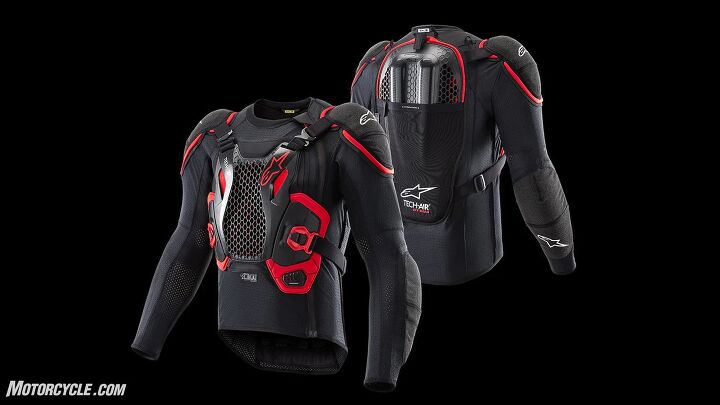







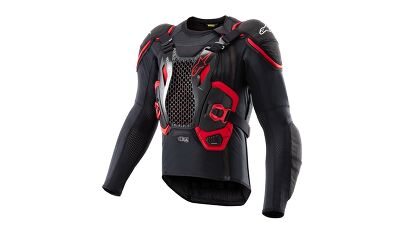




















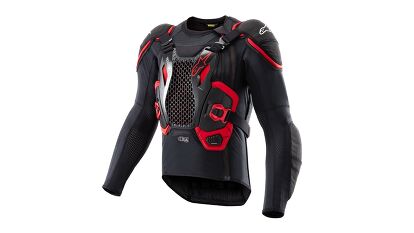

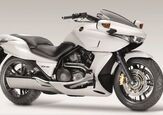
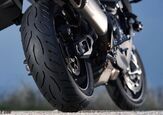
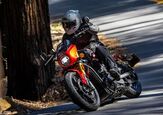

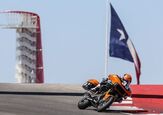

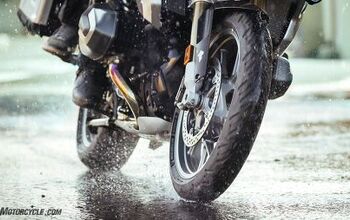
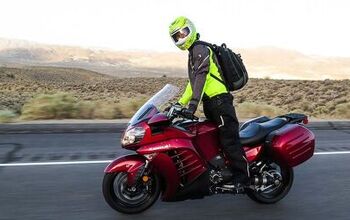
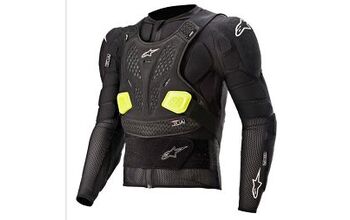
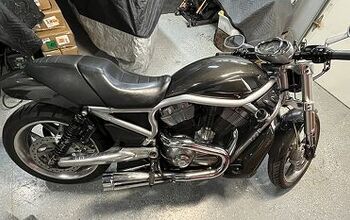
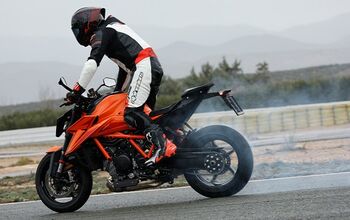



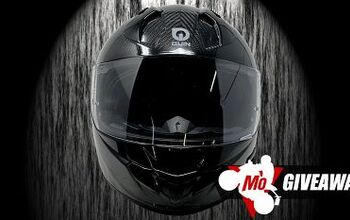
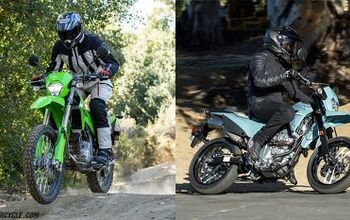
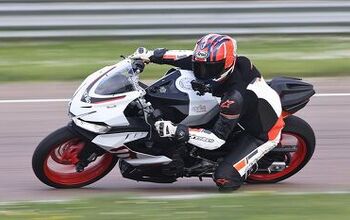
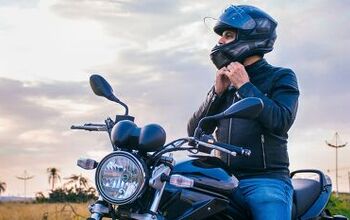
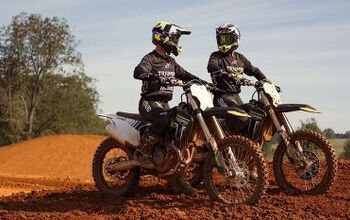
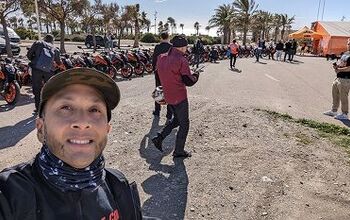


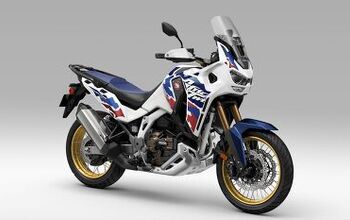
Comments
Join the conversation
I fit the demographic of the typical purchaser of this type of protection. I'm too old to be pulling the crap I get away with on my ADV bikes. I ride like Chris Burch but without his talent. I spend most of my disposable income on motorcycle related purchases. I tend to sit on the seat when I should be standing. I weigh 40lbs more than I did when I was 30. These are all signs that I should purchase a $1000 dollar motorcycling equivalent of a parachute. Then I tried one on. DANG! Let's talk about the weight and mass of this thing. That 7lbs equates to a gallon jug of water on your back. This will lead to more time staying seated over kickers that will donkey kick me over the bars which in turn raises the use of this protection. Perfect! Here's my Visa Card.
I have one of these now and I feel like my A10 breathes a lot better than this does. Maybe it breathes as well as some of the pressure suits do but even those don’t have a plastic bag in front of you. I’ll try riding in the heat as soon as summer is upon us.
im glad to see a review actually mention the lack of rib/side protection. I can’t understand this. It’s one of the reasons I almost sent it back but I decided to buy a football compression shirt with rib protection. Better than nothing for sure.